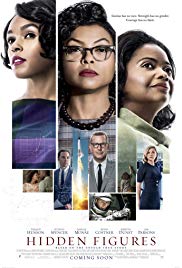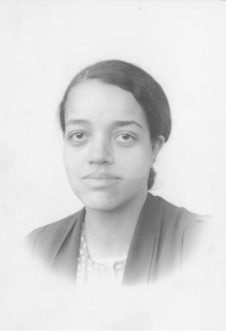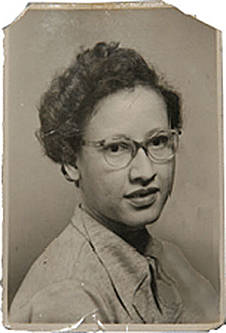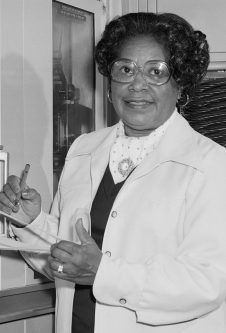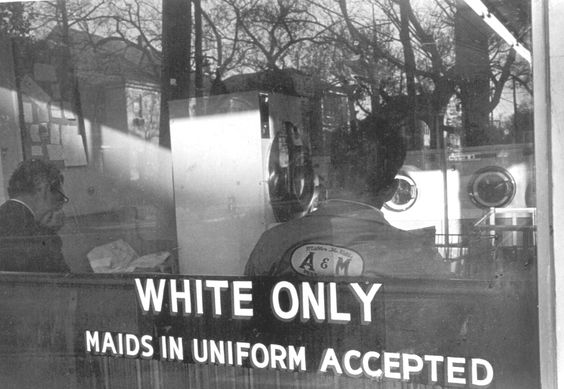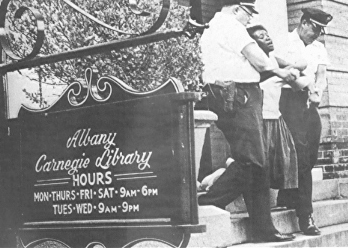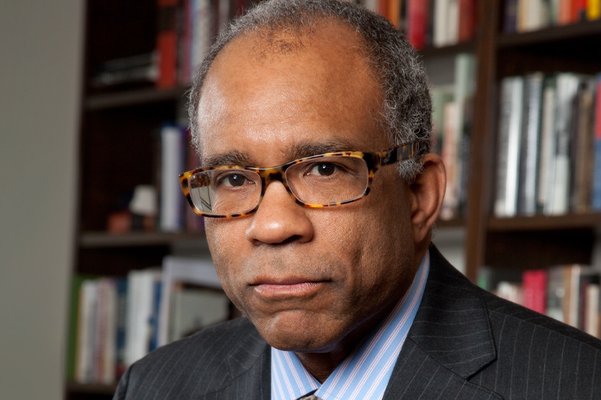1. Who or what is the antagonist in this story? What defeats the antagonist? Explain whether or not you believe that this shows a process that works in reality.
Suggested Response:
Racism (or “Jim Crow”) is the antagonist. This is what the heroines must overcome. The whites who show racist tendencies change by the end of the film when they come to understand that their African-American coworkers are valuable parts of the team. Racism is defeated by the need to get into space and by the courage of the “Colored” computers in challenging barriers to try to help the NASA team. This displays a process that has worked and continues to work at NASA, in the U.S. military, in business, in sports, and in many other areas. People working together for a common goal can lead to the end of prejudice. The question that whites in this film must answer is whether their racial prejudice is more important to them than getting a man into orbit. An example of team spirit triumphing over racial prejudice in sports is described in the movie Remember the Titans.
2. What or who are the “Hidden Figures” referred to in the title to this movie?
Suggested Response:
Shetterly cites two possibilities in her book Hidden Figures: One is the women, and especially the black women, whose contributions to America’s space effort went largely unrecognized until the movie was released. Another possibility is that the “Hidden Figures” are the mathematical figures that had to be uncovered in calculating trajectories and orbits for the astronauts.
3. Does this movie paint an accurate picture of racism in the Southern United States under Jim Crow? [or] What are some of the things about racism in the Southern U.S. under Jim Crow that this movie doesn’t show?
Suggested Response:
It’s not that the film is inaccurate, it’s simply that the story of the three black ladies who found jobs at NASA doesn’t lend itself to showing most of the terrible things that racists in the Southern U.S. did to black people: the daily humiliation, the beatings, the lynchings, etc. The movie doesn’t tell the story of the millions of people denied education and jobs because of the color of their skin.
4. What role does the scene with the policeman and the three protagonists play in the story? What does this tell you about the position of the black women in Virginia society in the late 1950s?
Suggested Response:
This scene foreshadows what happens in the film in terms of the attitude of many whites at NASA toward the black women with whom they work. It also serves as a reminder of the ever-present threat of force against black Americans inherent in Jim Crow, which continues to a lesser extent to this day.
5. [This question should be preceded by Question #1.] One view of human relations is that in our lives we are associated with different groups, called “tribes” in this formulation. There are involuntary tribes that we are born into, like families, clans, and countries. Then there are the tribes of affiliation which we join out of interest and belief. For example, Katherine Johnson could be said to belong to the following “tribes of affiliation:” mathematicians, the human computers, the NASA Space Task Group, mothers, church members, basket ball fans, etc. Analyze the conflict in this film in terms of this view of human relations.
Suggested Response:
Racism broke down because the voluntary “tribe” of the NASA workforce became more important than the societally assigned “tribe” of race. The concept of race and racial differences is a societal construct. To give an example, many people who are identified as African American have as many white ancestors as they do black ancestors. That means that many of their genes are, in fact, caucasian. So, why are they not classified that way?
Note: It’s a great exercise to ask students to identify the tribes to which they belong, both those assigned by tradition and society and those assumed voluntarily. Which are the most important?
6. Three characters in the film exhibit racist tendencies. Identify one of them, describe how their racism is shown, and what happens to their attitudes through the course of the film.
Suggested Response:
The characters who exhibit the most adherence to Jim Crow attitudes are the police officer shown at the beginning of the movie; Mrs. Mitchell, the Female Computers’ white supervisor, and Paul Stafford, the condescending white engineer in the Space Task Group. By the end of the film, each changes their attitudes: the policeman escorts the three protagonists to work; Mrs. Mitchell indicates her growing respect for Dorothy by addressing her as “Mrs. Vaughan,” and Paul Stafford reverses his resistance to Katherine’s presence and status, bringing her a cup of coffee.
7. Coffee serves as a symbol in this movie. What does it symbolize?
Suggested Response:
Professional respect and acceptance as a member of the NASA team.
8. What is the role of the romance between Katherine Johnson and the Army officer that she married in the story?
Suggested Response:
It shows that feminism is not just work related and that a man with the strength of character can appreciate and love a strong woman if he abandons stereotyped ways of viewing women. It is also an accurate portrayal of Mrs. Johnson’s second marriage and her second husband, Colonel Jim Johnson. My Remarkable Journey, pp. 140, 141, 207, 214 – 216.

